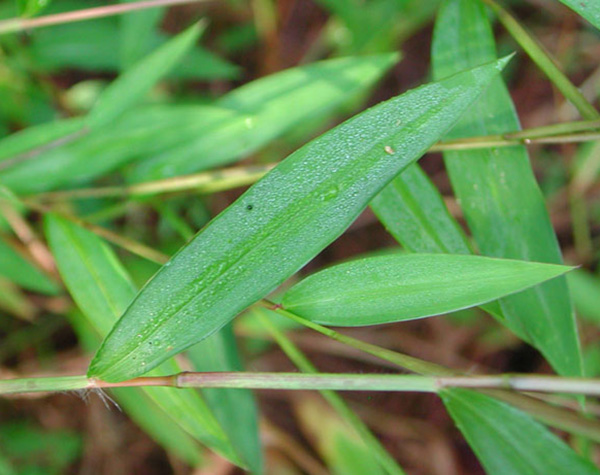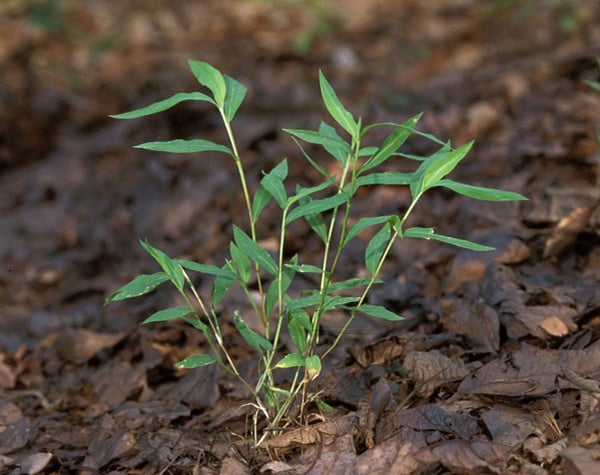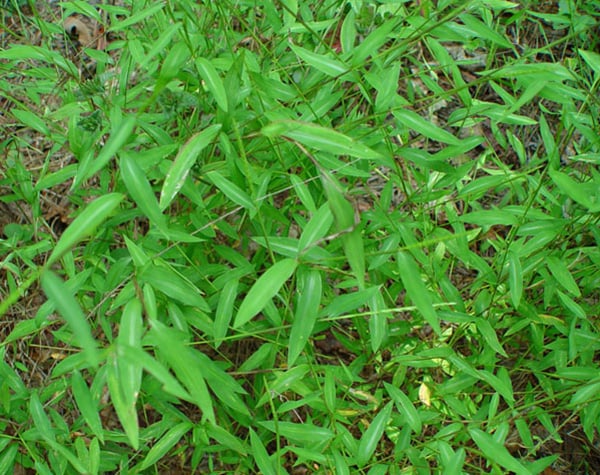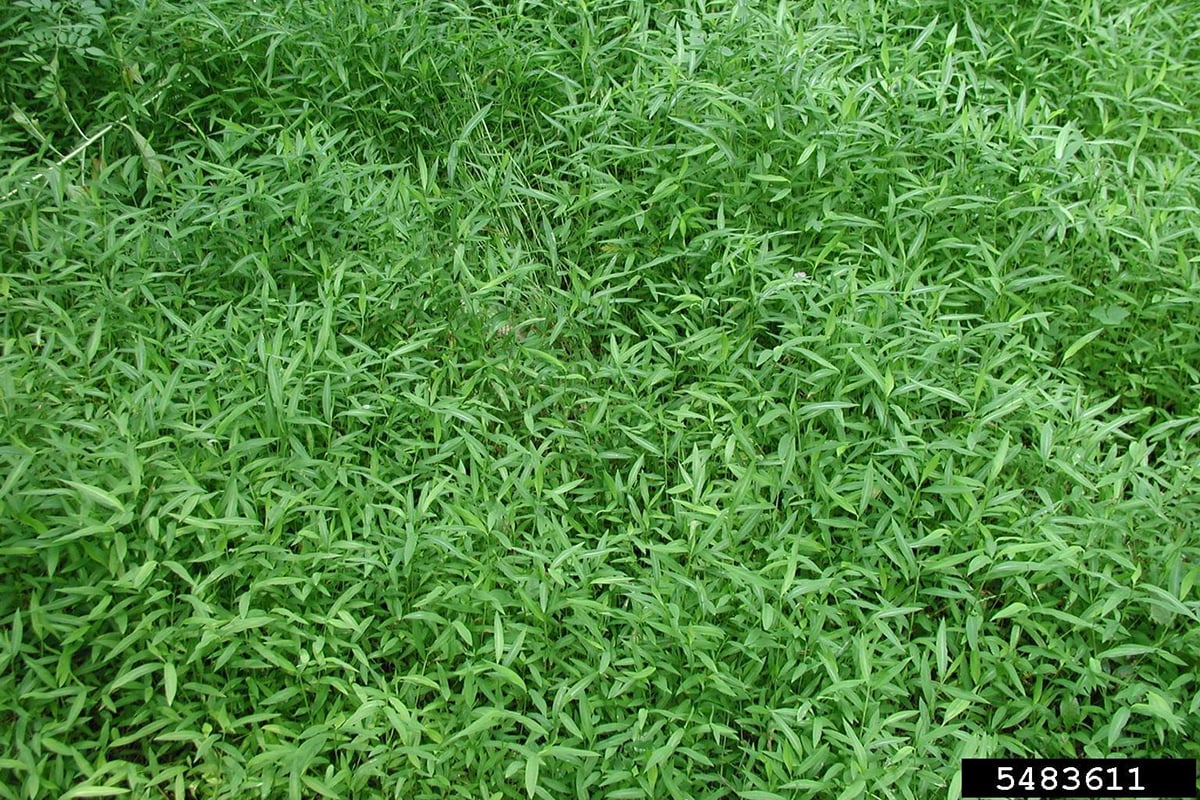Invasive Plants in Massachusetts
Japanese Stilt-grass
Japanese Stilt-grass
Originally from Asia, Japanese stilt-grass (Microstegium vimineum) likely arrived in the U.S. as packing material for porcelain. This annual reaches 2.5-3 feet high, and its leaves are 2-4 inches long, and ¼ to ½ inches wide, with a whitish midrib.
The Problem
It spreads across the forest floor, forming dense mats that crowd out other plants. Forests with high numbers of white-tailed deer may be especially vulnerable, because the deer will eat native plants, but not stiltgrass.
The Solution
For small populations, hand pulling can be effective. Be careful when disposing of plants so that you avoid spreading seeds. Mowing in late summer, before the plants make seeds, can also be effective. For large populations, foliar treatment with a systemic herbicide may be needed. Use of a pre-emergent herbicide may be effective in controlling those with an established seed bank (seeds that persist in the soil). Always read and follow the directions on the label when using herbicide.
Pictures of Japanese Stilt-grass




Stay Connected
Don't miss a beat on all the ways you can get outdoors, celebrate nature, and get involved.


